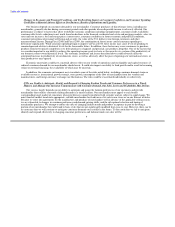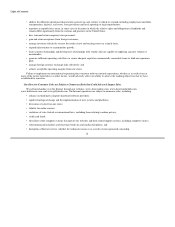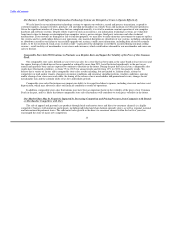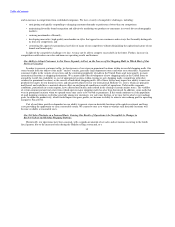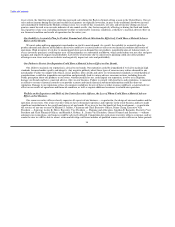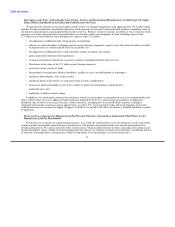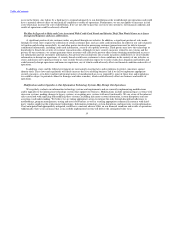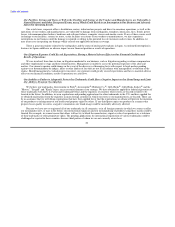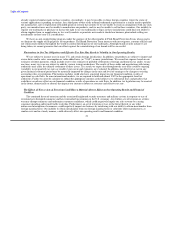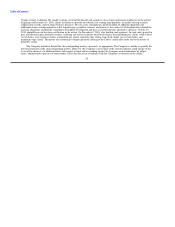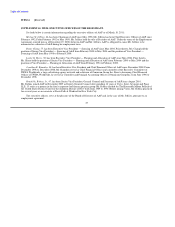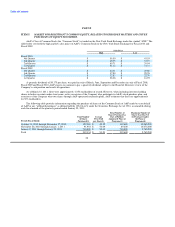Abercrombie & Fitch 2010 Annual Report Download - page 22
Download and view the complete annual report
Please find page 22 of the 2010 Abercrombie & Fitch annual report below. You can navigate through the pages in the report by either clicking on the pages listed below, or by using the keyword search tool below to find specific information within the annual report.
Table of Contents
occur in the future. Any failure by a third party to respond adequately to our distribution needs would disrupt our operations and could
have a material adverse effect on our financial condition or results of operations. Furthermore, we are susceptible to increases in fuel
costs which may increase the cost of distribution. If we are not able to pass this cost on to our customers, our financial condition and
results of operations could be adversely affected.
We May be Exposed to Risks and Costs Associated With Credit Card Fraud and Identity Theft That Would Cause us to Incur
Unexpected Expenses and Loss of Revenues.
A significant portion of our customer orders are placed through our websites. In addition, a significant portion of sales made
through our retail stores require the collection of certain customer data, such as credit card information. In order for our sales channels
to function and develop successfully, we and other parties involved in processing customer transactions must be able to transmit
confidential information, including credit card information, securely over public networks. Third parties may have the technology or
knowledge to breach the security of customer transaction data. Although we have security measures related to our systems and the
privacy of our customers, we cannot guarantee these measures will effectively prevent others from obtaining unauthorized access to
our information and our customers' information. Any person who circumvents our security measures could destroy or steal valuable
information or disrupt our operations. A security breach could cause customers to lose confidence in the security of our websites or
stores and choose not to purchase from us. Any security breach could also expose us to risks of data loss, litigation and liability and
could seriously disrupt operations and harm our reputation, any of which could adversely affect our financial condition and results of
operations.
In addition, states and the federal government are increasingly enacting laws and regulations to protect consumers against
identity theft. These laws and regulations will likely increase the costs of doing business and if we fail to implement appropriate
security measures, or to detect and provide prompt notice of unauthorized access as required by some of these laws and regulations,
we could be subject to potential claims for damages and other remedies, which could adversely affect our business and results of
operations.
Modifications and/or Upgrades to Our Information Technology Systems May Disrupt Our Operations.
We regularly evaluate our information technology systems and requirements and are currently implementing modifications
and/or upgrades to the information technology systems that support our business. Modifications include replacing legacy systems with
successor systems, making changes to legacy systems, or acquiring new systems with new functionality. We are aware of the inherent
risks associated with replacing and modifying these systems, including inaccurate system information, system disruptions and user
acceptance and understanding. We believe we are taking appropriate action to mitigate the risks through disciplined adherence to
methodology, program management, testing and user involvement, as well as securing appropriate commercial contracts with third-
party vendors supplying the replacement technologies. Information technology system disruptions and inaccurate system information,
if not anticipated and appropriately mitigated, could have a material adverse effect on our financial condition and results of operations.
Additionally, there is no assurance that a successfully implemented system will deliver the anticipated value to us.
19


